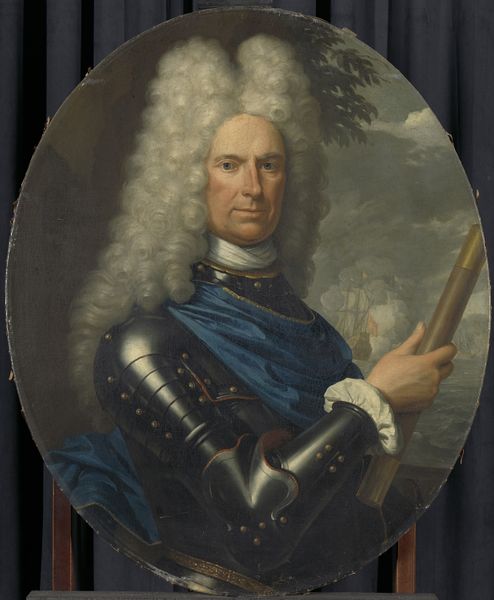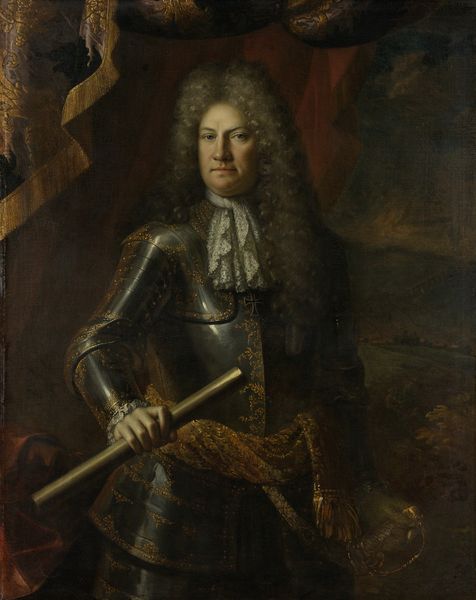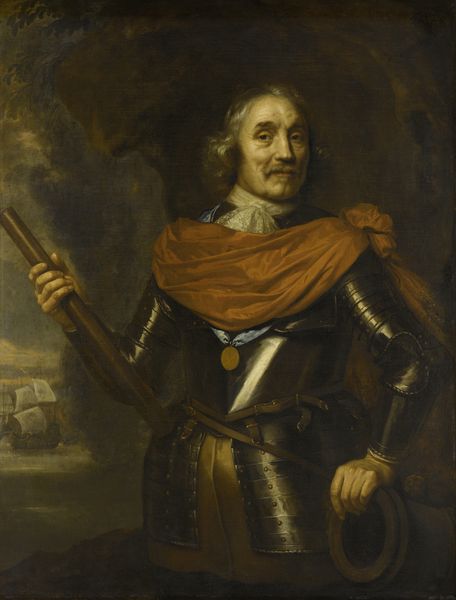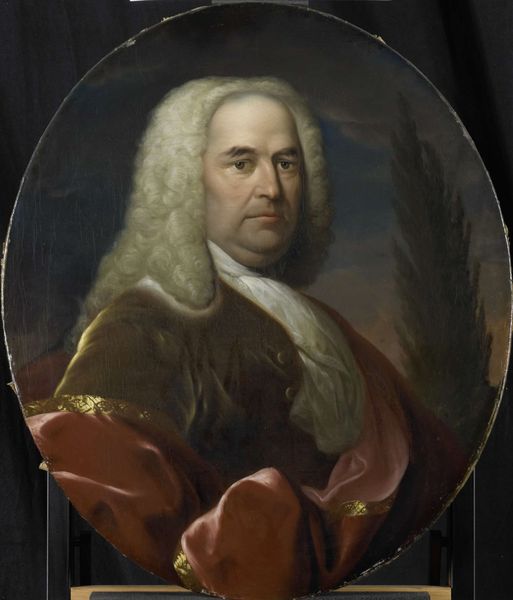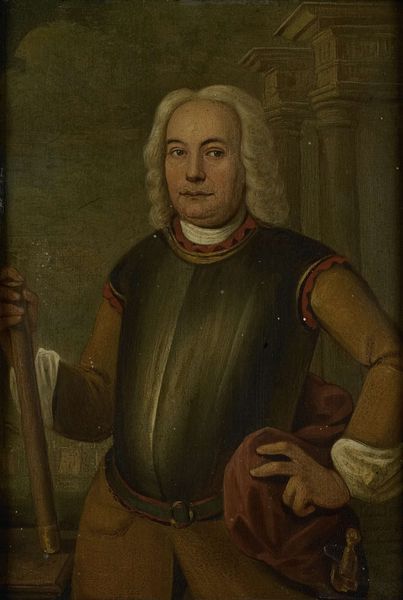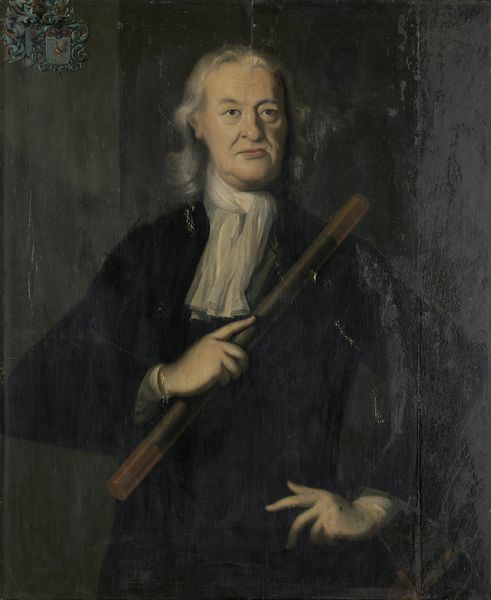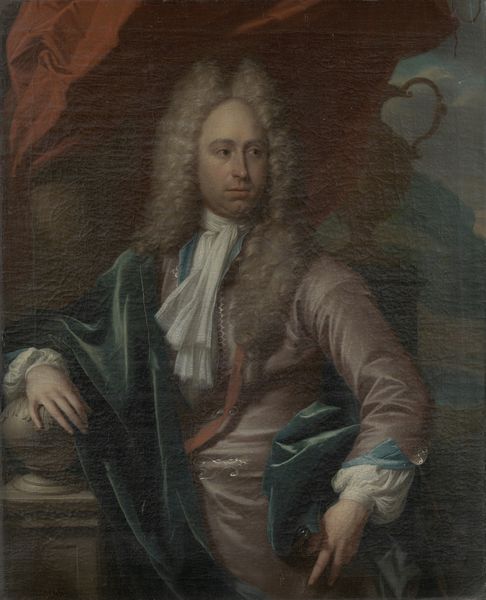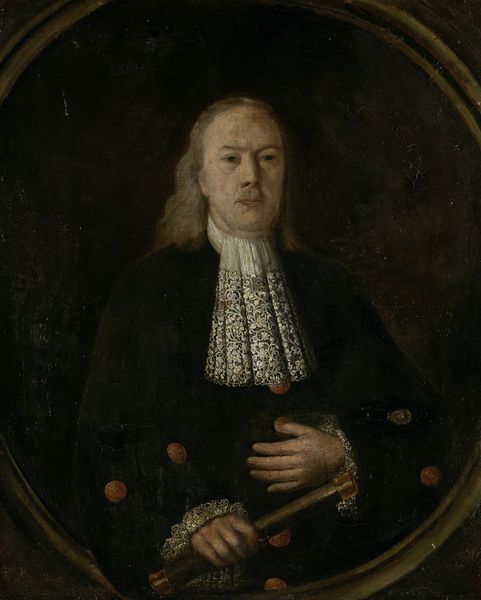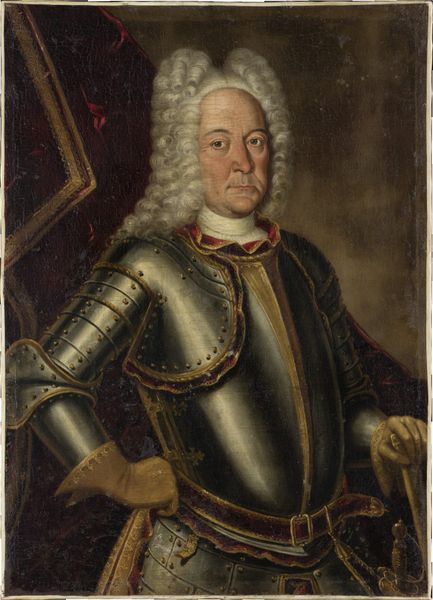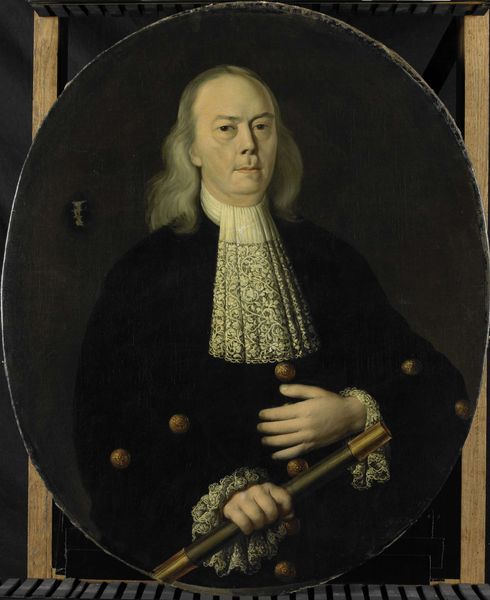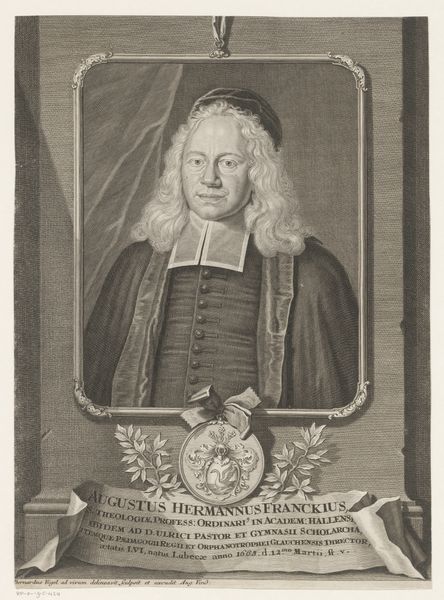
oil-paint
#
portrait
#
baroque
#
oil-paint
#
oil painting
#
genre-painting
#
history-painting
#
academic-art
Dimensions: height 110 cm, width 92.5 cm
Copyright: Rijks Museum: Open Domain
Editor: This is an oil on canvas portrait of "Baron Gustaaf Willem van Imhoff," made around 1745. The unknown artist captured a man holding what appears to be a musical instrument. I find myself drawn to the textures and, perhaps strangely, the slightly distressed state of the canvas. What draws your eye in this piece? Curator: For me, it’s the labor embedded in every aspect of the work, from the canvas itself to the layers of oil paint meticulously applied. Think about the materials sourced—the flax grown, spun, and woven into canvas, the pigments ground and mixed to achieve those hues, the very tools employed. It’s a window into 18th-century material culture. Consider that coat – the tailoring alone! Editor: It's interesting to think about how much effort went into things we often overlook. Do you see any societal implications reflected in the artwork? Curator: Absolutely. Portraiture was a privilege afforded to a select few, primarily the aristocracy and burgeoning merchant class. What does it signify when someone commissions a painting? That is an individual with the financial capital and social standing that reinforces and showcases power structures. The details—the fabric of his coat, his powdered wig, even the musical instrument—speak to a specific level of consumption and the materials were exclusive and therefore displayed privilege. Editor: So, the portrait itself becomes an artifact representing social stratification through access to materials and skill. It makes me consider portraits of less privileged people, and the value of those as a source of insight to what was available to those people, compared to what we see here. Curator: Exactly. It's a conversation between materials, labor, and power. Analyzing the “how” and “what” of creation lets us ask questions about access and control during the era. I found this examination especially revealing. Editor: Thanks, I didn't realize I was missing so much meaning by just considering the visual components. Now, the entire method of production and its social context enhance its significance for me.
Comments
rijksmuseum about 2 years ago
⋮
The highest-ranking Dutch East India Company (VOC) official in Asia was the governor-general. He presided in the Castle of Batavia (now Jakarta, Indonesia), a fort built by the Dutch. The assembly hall in the Castle of Batavia was the centre of Dutch power in Asia. The walls were hung with portraits of all of the governors-general. Most of the 18th-century examples shown here were painted in Asia, often by anony¬mous artists.
Join the conversation
Join millions of artists and users on Artera today and experience the ultimate creative platform.
